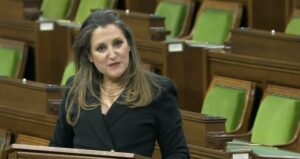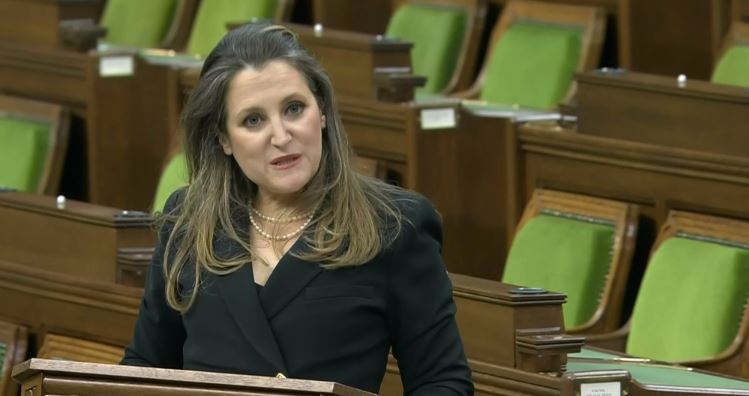The Federal Government unveils $101.4B in new spending
 TORONTO – Defeating Covid-19, getting out of the recession caused by the pandemic and reviving the country, with the aim of making it more prosperous and innovative. These are the three challenges to which the 2021 Budget must respond, according to what was indicated yesterday by Finance Minister Chrystia Freeland, who presented her first manoeuvre in the House of Commons since taking over the reins of the dicastery after the resignation of Bill Morneau.
TORONTO – Defeating Covid-19, getting out of the recession caused by the pandemic and reviving the country, with the aim of making it more prosperous and innovative. These are the three challenges to which the 2021 Budget must respond, according to what was indicated yesterday by Finance Minister Chrystia Freeland, who presented her first manoeuvre in the House of Commons since taking over the reins of the dicastery after the resignation of Bill Morneau.
And to overcome these challenges, the government has decided to use once again a massive spending plan to support our country’s families, workers and businesses. The 2021 Financial Year provides for additional expenses of 101.4 billion dollars, in addition to the more than 350 billion dollars already allocated to deal with the double crisis – economic and health – caused by Covid-19.
This year’s Maneuver lays the groundwork for the creation of a $30 billion childcare plan over the next five years: in 2026, preschool nurseries will cost families just $10 a day.
As for the record deficit caused by the pandemic, the budget red is currently quantified at $354.2 billion, while by the end of fiscal year 2021-2022 the forecast speaks of a net cut in the budget hole, which is expected to be at $154.7 billion. Then, the deficit is expected to shrink to 59.7 billion in 2022-2023, to 51 billion in 2023-2024, to 35.8 billion in 25-25 and finally to 30.7 billion in the following fiscal year.
The Budget also provides for the extension of Cerb and other support plans for those who have lost their jobs and for companies in difficulty due to pandemics: the expenditure, which will remain in force until the end of September, will be around 12 billion dollars.
The government then decided to significantly expand the support provided to the country’s indigenous communities. In all, the Maneuver provides direct aid of $18 billion to Aboriginal people. At the same time, the federal executive is intent on accelerating the country’s green turn. This year’s Financial Statement contains a $17.6 billion expense item to help small and medium-sized enterprises in the technological transition phase by creating certain environmental parameters.
As expected, in this 2021 budget the foundations have finally been laid to create a national standard for long-stay nursing homes, whose jurisdiction nevertheless remains at the provincial level: with the $3 billion budgeted, Ottawa will have to ensure that all these facilities – which have suffered heavily from the Covid-19 pandemic in terms of infections and deaths – comply with minimum standards of safety and patient protection.
Also on the fight against the Covid-19 pandemic, the federal government intends to strengthen the country’s response capabilities in the face of the threat of a possible new wave in the future. This year’s Budget provides a $2.2 billion investment for research and development companies also on the coronavirus vaccine front.
Freeland also wanted to emphasize the need to maintain secure borders and ensure a future step-by-step transition when it comes to reopening borders. To do so, Ottawa has decided to set aside $424 million for the fiscal year 2021-2022.
In addition, there is a new expenditure of $41.3 million over the next six years for Statistics Canada, which this year was forced to postpone the preparation of the new national census. The funds – said the Minister – will serve to improve and optimize data collection.
In the Budget, we also find some proposals that will have to be activated with the presentation and approval of specific bills. Among them is the request to create a national minimum wage, which until now has been decided at the provincial level. The federal government will unveil a bill in the coming days to set the minimum wage at $15 an hour.



